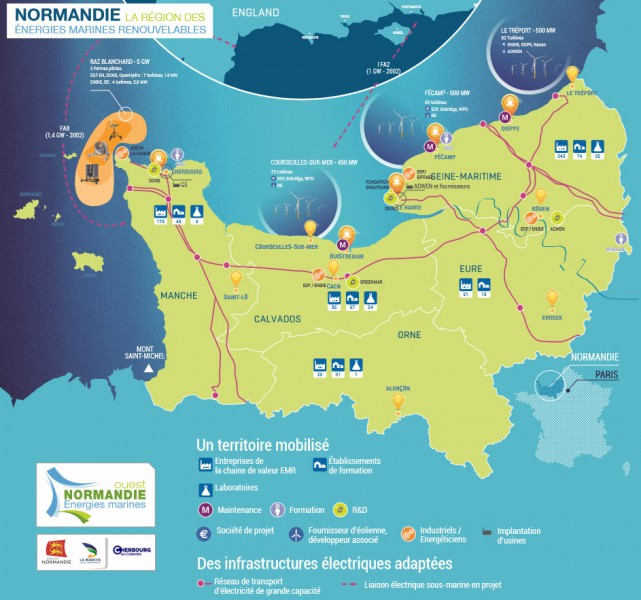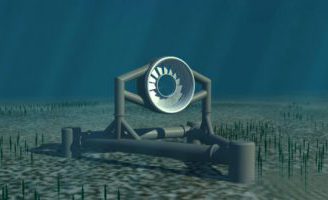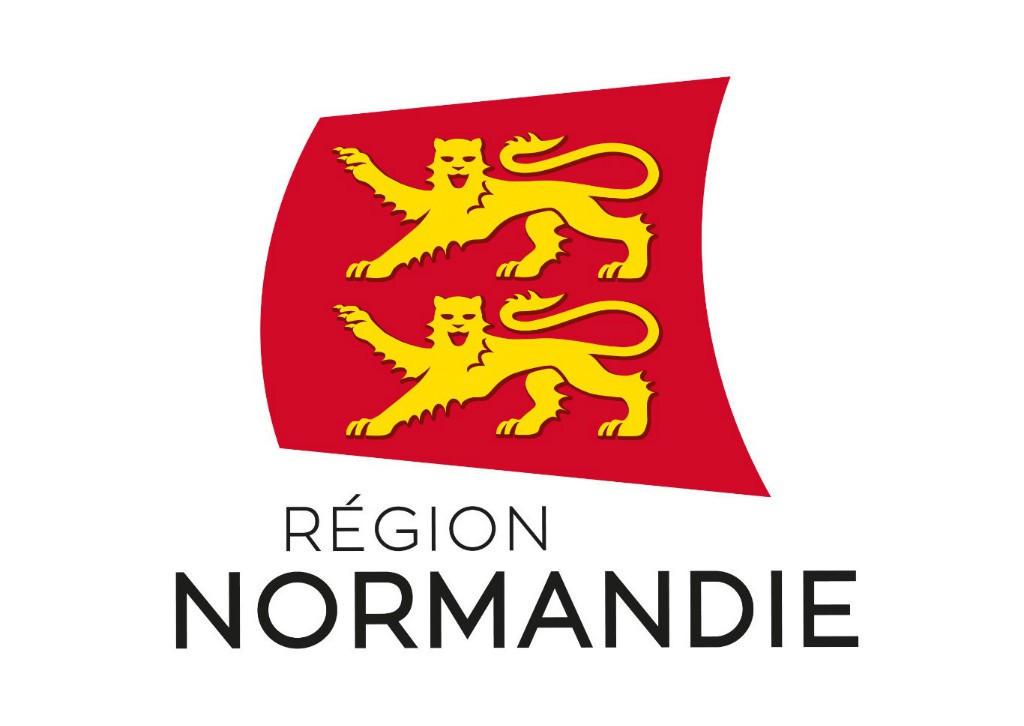LIPRA – an interdisciplinary project to protect MRE and marine environment
Polymerisable ionic liquid for antifouling and anticorrosion coating
Renewable Energy represent a strategic issue for France, especially to answer issues of energy dependency and ecology, and a major economic development challenge for Normandy, which aims to become a leader in research, innovation and exploitation of Marine Renewable Energy. But the development of a new energy sector makes emerged new operating problems. LIPRA project try to respond concretely to a new issue: the protection of immersed installations, for a better price competitiveness and respectfully with environmental constraints.
Since the integration of MRE projects in the French energy mix, Normandy is became THE MRE territory in France. With more than 600 km of coasts, Normandy has one of the biggest European deposits for offshore wind turbines, and has been choose by the government to welcome 50% of the future offshore wind farms (Courseulles-sur-Mer, Fécamp and Dieppe-Le-Tréport). Normandy also own the first field commercially exploitable for tidal energy in the world (Raz Blanchard), a high capacity power grid (due to the presence of 3 nuclear power plants and the construction of the French EPR on its territory), and dimensioned port infrastructures for hosting manufacturing plant of offshore wind and tidal turbines.
Protection of tidal turbines: an economic and ecologic issue
This industrial turning drives the different actors (SMEs, industrialists, researchers and academics) to meet new challenges, including those of the lifetime of metallic structures immerged in seawater.
In the case of tidal turbines, metal structures that compose them are equipped with turbines of 3 to 16 meters in diameter, weighing several tons and are immersed in the bottom of the sea a few kilometers from the coast. The turbines are subjected to tough conditions: the environment is corrosive (presence of chloride ions, sulfates, etc. and bacteria incriminated in Microbiologically Influenced Corrosion) and the presence of limestone, calcium or magnesium forms a deposit on the structure, the accumulation of algae and shells hinders maintenance operations, reduces turbines’ efficiency and makes structures heavier, etc.. These factors have a significant impact on the performance and lifetime of structures, generate high operating and maintenance costs, and are an obstacle to the exploitation of this technology. Hence the importance of establishing effective protection solutions.
REACH, the mutation of a market
Antifouling protection systems already exist, but the arrival of REACH (Registration, Evaluation, Authorisation and Restriction of Chemicals) in 2007, has upset the market of biocides and antifouling paints. Indeed, REACH aims to control potential risks of chemicals on Humans and Environment, whose molecules used in biocides. In this context, all biocides are subject to a marketing authorization, following the evaluation of the toxicity of molecules that compose them, their rate of degradation, or their ecotoxicity on marine environment. After studies, some molecules have been forbidden to be placed on the European market (for example: the cybutryne, widely used in antifouling coatings for its biocides properties, was banned in January 2016 by the European Commission[1]). Others have not yet been approved and have been included in the Review Program. If biocides, compounds of these substances, have a temporary marketing authorization, pending the conclusion of that review, it means that some products may be finally prohibited after this period. This therefore results in a mutation of the market of biocides products and antifouling paints, in order to anticipate the prohibition of certain substances.
LIPRA: a concrete answer to develop MRE
This is in this context that LIPRA project has been initiated by the Laboratoire de Chimie Moléculaire et Thioorganique LCMT (which is a major actor in the domain of molecular and macromolecular chemistry),[2], in partnership with the Biologie des Organismes et Ecosystèmes Aquatiques laboratory BOREA[3] and Corrodys.
The LIPRA project, for Polymerisable ionic liquid for antifouling coating, aims to develop a new antifouling coating with specific requirements: being anticorrosive, with bactericide and fungal properties, economically viable, with a sufficient lifetime, abrasion, erosion and biodeterioration resistant, and above all, ecofriendly.
The originality of this project lies in synthesizing an ecological coating, metal-free, which will cover the surface of the submerged structures of a polymer film, made of kinds of microscopic brushes. Only the bacteria in contact with the coating will then undergo a destruction of the cell membrane, which will have the effect of preventing proliferation of bacteria and protecting facilities against Microbiologically Influenced Corrosion and fouling.
More than a concrete answer to issues in this new energy sector, this project also aims to develop and reinforce cooperation between local researchers, academics, laboratories and industrialists.
![]() Partners
Partners
![]() Financial backers
Financial backers
[box_info]
[1] European decision on Cybutryne
[2] LCMT – Unité Mixte de Recherche CNRS / ENSICAEN / UNICAEN located in Caen
[3] BOREA – Unité Mixte de Recherche CNRS / UNICAEN / MNHN / UPMC / IRD located in Caen
[/box_info]










